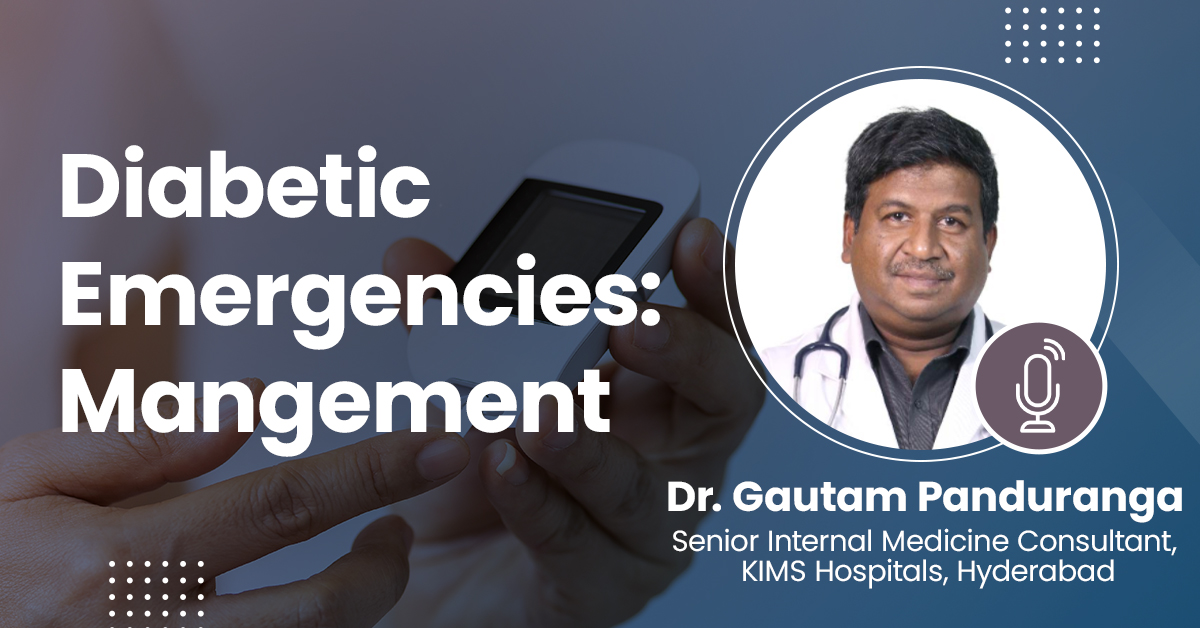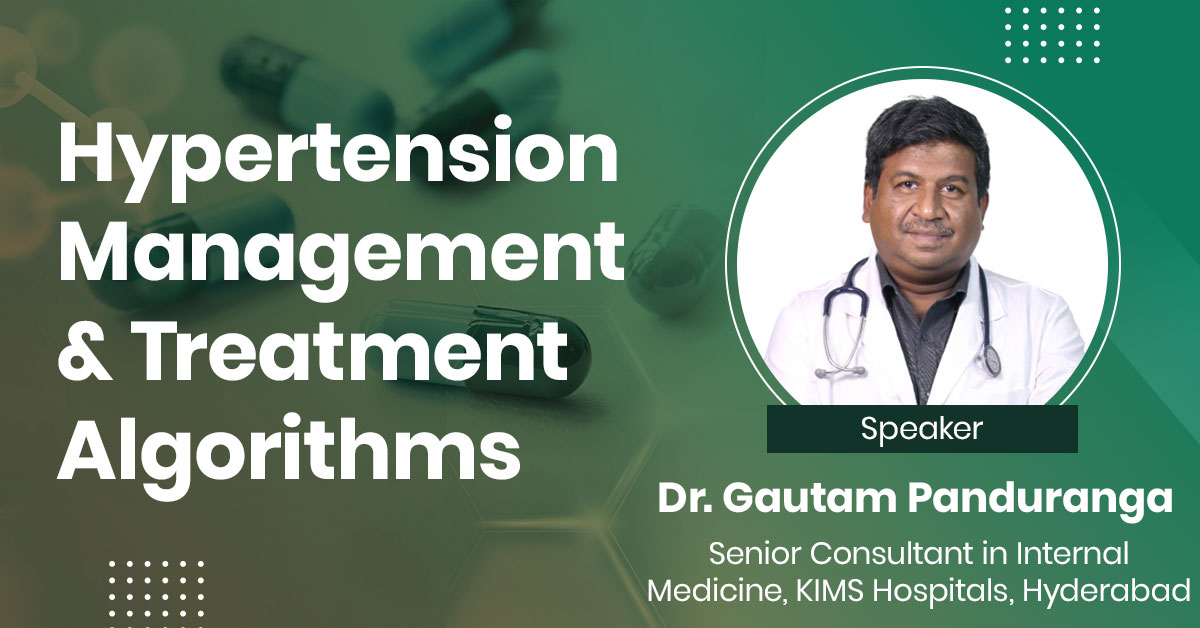- 86.6k views
Diabetic Emergencies
Diabetic emergencies occur when blood sugar levels become dangerously high or low, requiring immediate medical attention. Common emergencies include diabetic ketoacidosis (DKA), where high blood sugar leads to a buildup of acids in the blood, and hypoglycemia, where blood sugar drops too low, causing confusion, seizures, or unconsciousness. Symptoms of these emergencies may include extreme thirst, frequent urination, nausea, sweating, or disorientation. Quick intervention, such as administering insulin for high blood sugar or glucose for low blood sugar, is critical. Proper diabetes management and regular monitoring can help prevent these life-threatening situations.
About the Speaker

Dr. Gautam Panduranga
Senior Internal Medicine Consultant, KIMS Hospitals, Hyderabad
Dr Gautam Panduranga has trained and worked in India and abroad. After completing MBBS from Gandhi Medical College and MD in General Medicine from Osmania Medical College / Hospital, he went to the UK in 2000 to pursue further training in National Health Services (NHS) and is fully registered by GMC (General Medical Council, UK). After serving for 3 years in the UK, Dr. Gautam went to USA where he completed residency in Internal Medicine at Metro Health Medical Center (Case Western Reserve University, Cleveland, OH, USA). He is Board Certified in Internal Medicine, USA and worked as a Hospitalist (providing care for hospital inpatients) for 5 years at Tucson Medical Center (University of Arizona, USA). Currently, he is working as a Consultant and Physician in Internal Medicine at KIMS Hospitals, Secunderabad since 2015. His interests include providing comprehensive care for patients and treating those with lifestyle disorders and multi-system problems. He is also an Associate Professor in Medicine at His passion includes teaching residents (DNB) and medical students.
Upcoming Case Discussions
Impact of Endometriosis on Fertility
Endometriosis, a condition where endometrial-like tissue grows outside the uterus, can significantly impact fertility. It causes inflammation, scarring, and adhesions that may distort pelvic anatomy, block fallopian tubes, and impair ovarian function. Endometriosis is also linked to hormonal imbalances and poor egg quality, reducing the chances of conception. Symptoms like chronic pelvic pain and painful intercourse further complicate fertility. Diagnosis often requires laparoscopy, while management includes pain relief, hormonal therapy, and assisted reproductive techniques like IVF. Early intervention with medical or surgical treatment can improve reproductive outcomes, but severe cases may necessitate advanced fertility treatments for conception.
Hyperlipidemia: From Diagnosis to Treatment
Hyperlipidemia is a condition characterized by elevated levels of lipids, such as cholesterol and triglycerides, in the blood, which can increase the risk of cardiovascular diseases. Diagnosis typically involves blood tests measuring lipid profiles, while treatment focuses on lifestyle changes, such as diet and exercise, alongside medications like statins to manage cholesterol levels and reduce cardiovascular risk. Regular monitoring is essential for effective management and prevention of complications.
Acne: Disorders and Treatment Approaches
Acne is a common dermatological condition caused by clogged pores, excess sebum production, bacterial growth, and inflammation. It can manifest as blackheads, whiteheads, papules, pustules, or cysts, often leading to scarring if untreated. Various factors, including hormonal changes, diet, stress, and genetics, influence its severity. Treatment approaches range from topical and oral medications, such as retinoids, antibiotics, and hormonal therapy, to advanced procedures like chemical peels and laser therapy. A personalized skincare regimen, along with lifestyle modifications, plays a crucial role in managing and preventing acne.
Lung Ultrasound in Acute Respiratory Failure
Lung ultrasound has emerged as a vital, non-invasive tool in the rapid assessment of acute respiratory failure. It provides real-time imaging to differentiate conditions like pneumonia, pulmonary edema, pneumothorax, and pleural effusion with high accuracy. Compared to traditional chest X-rays, lung ultrasound offers superior sensitivity, especially in critically ill patients where bedside evaluation is crucial. Its ability to guide immediate clinical decisions improves patient outcomes and reduces unnecessary radiation exposure. With standardized protocols like the BLUE (Bedside Lung Ultrasound in Emergency) protocol, it enhances diagnostic efficiency in emergency and ICU settings.
Gallstone Disease & Cholecystitis: When to Operate?
iGallstone disease and cholecystitis are common conditions requiring careful evaluation to determine the need for surgery. Symptomatic gallstones causing recurrent pain, nausea, or complications like cholecystitis often necessitate cholecystectomy. Acute cholecystitis, characterized by inflammation, fever, and right upper quadrant pain, typically requires early surgical intervention to prevent complications like perforation or sepsis. In high-risk patients, conservative management with antibiotics and drainage may be considered. Elective surgery is recommended for asymptomatic patients with high-risk factors, such as large gallstones or gallbladder polyps, to prevent future complications.








